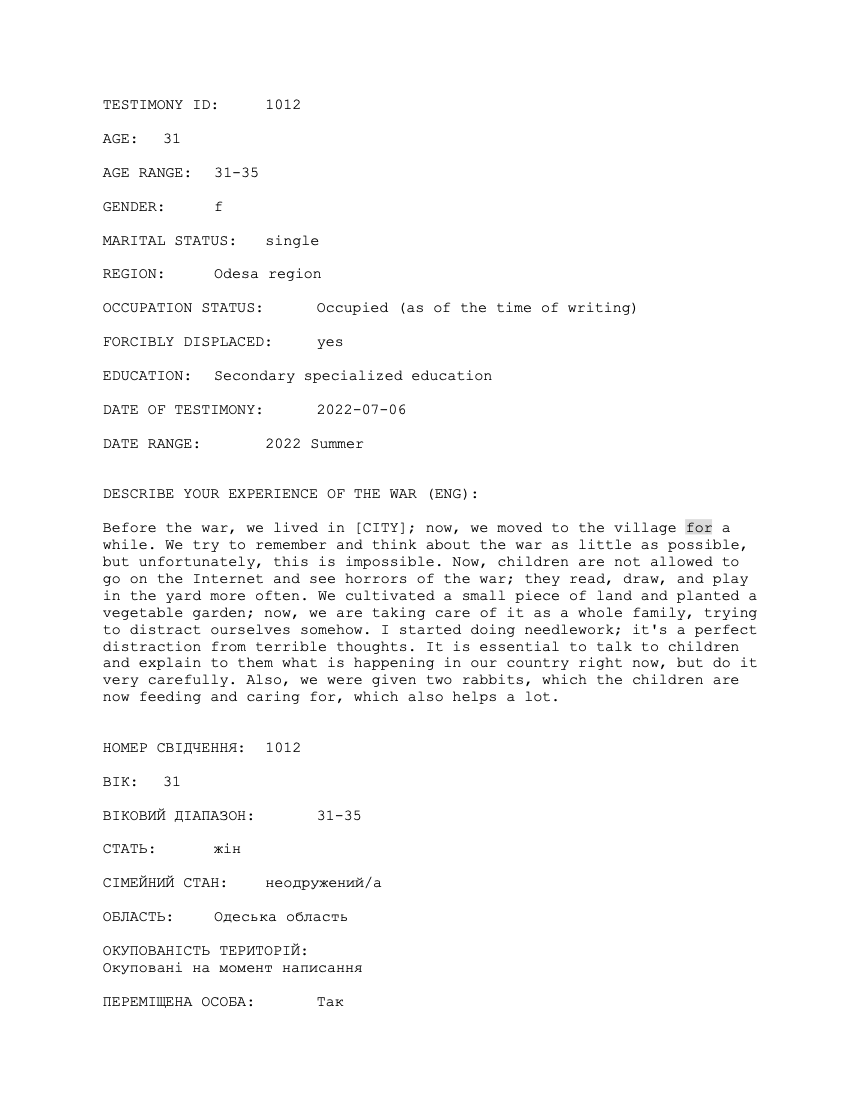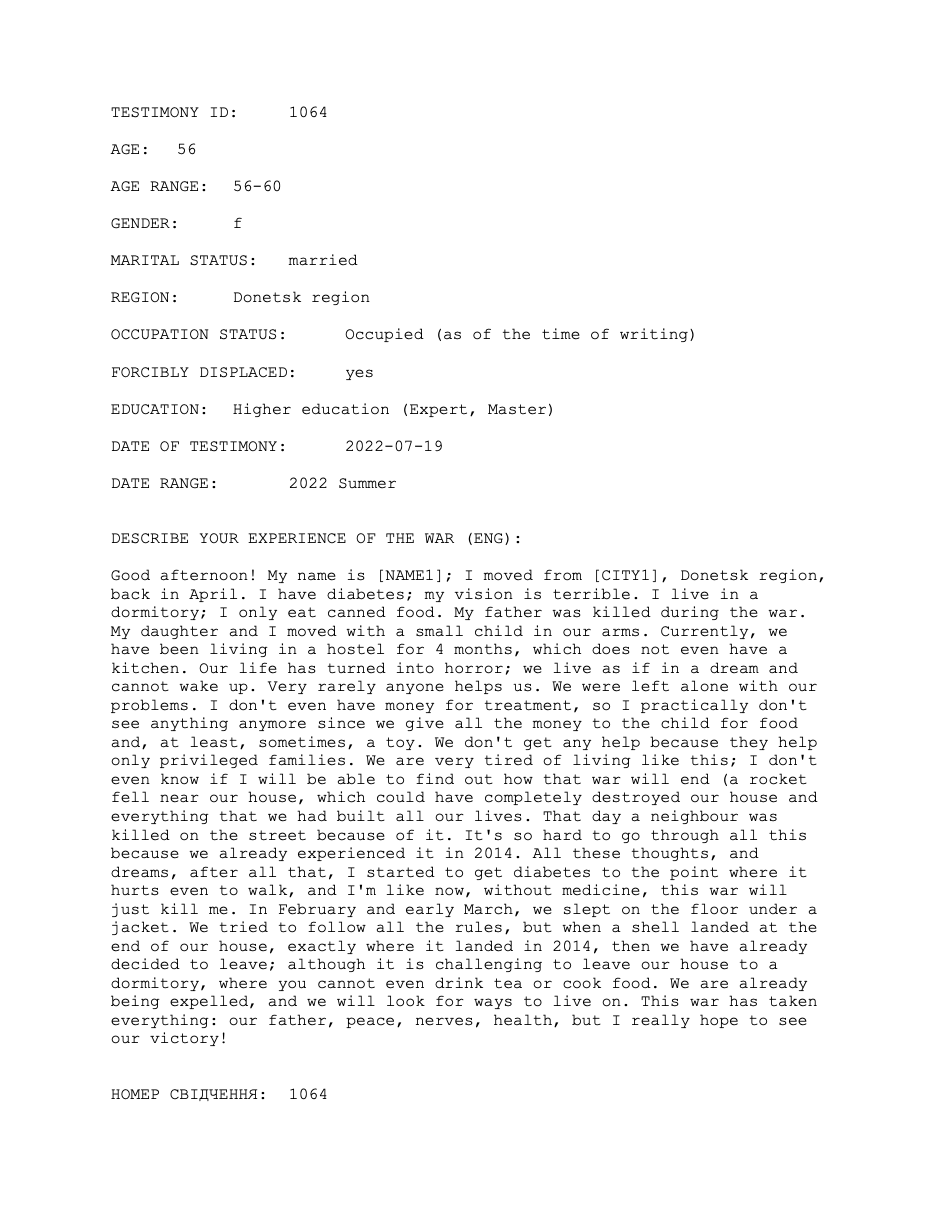Voices of Displacement in the Russia-Ukraine War
What does it mean to lose your home? Not just the building itself, but the sense of safety, rhythm of daily life, and the connections that make a place feel like yours. This exhibit explores the personal and shared experiences of displacement during the Russia-Ukraine war. Through four testimonies, it follows the emotional, physical, and psychological toll of being displaced, while also showing how people seek ways to hold on to stability even as war disrupts their lives.
Each story occurs in a different context, but they all share similar emotions: fear, grief, and the search for belonging. A mother flees Kharkiv with her children, leaving behind her home and the routines that once shaped daily life. A teenager resettled abroad reflects on the emotional weight of separation and how distance reshapes her sense of identity. In overcrowded dorms, a woman from Donetsk describes how poor conditions and lack of privacy affect her physical and mental health. A young family begins life in the countryside, planting a garden and caring for animals to create moments of comfort and restore a sense of home. Together, these stories show that displacement is not just a one-time event. It is a continuous experience of loss and a slow, intentional effort to hold on to meaning in an unfamiliar place.
Research on displacement deepens the understanding of what it means to lose a home. Scholars emphasize that this loss extends far beyond the physical structure; it includes the disruption of routines, relationships, and the sense of safety that shape daily life. The separation from familiar communities and support systems often leads to grief, anxiety, and disorientation. Studies also show that displacement can leave lasting psychological effects, with trauma becoming deeply connected to identity and memory. At the same time, researchers highlight the role of small, everyday actions in fostering resilience. Even in the face of war, patterns of care through conversation, routine, or tending to one’s surroundings can offer a sense of continuity and control. These insights help contextualize the personal stories featured in this exhibit and highlight how broader patterns of displacement are lived and felt on an individual level.
Rather than focusing on what war destroys, this exhibit centers on the strength of those who endure it. It explores how displacement disrupts both place and identity, while also revealing how individuals strive to preserve memory, community, and hope in the face of loss. By placing these experiences in dialogue, the exhibit highlights how trauma reshapes daily life and redefines belonging. It invites visitors to see displacement not simply as geographic movement, but as a transformation of everyday experience.



